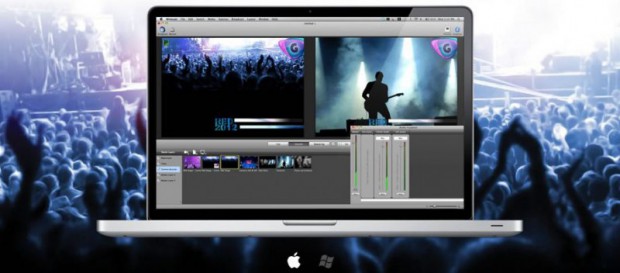The rising popularity of user-generated and homegrown media like Youtube shows, podcasts, and Let’s Play channels is making it easier to imagine yourself talking to the masses and being a star. Sometimes you want to connect right away, which is where live webcasting comes in. Making your own media can be about taking the time to craft something at home so you can perfect it, and in some cases – it is about the instant connection that you can make with your audience. Being able to broadcast via a live webcast means you can talk to your audience while you’re making your content, which is a new and unique way to share what you do with the world. Creating a webstream of an event is one thing – but making that a live, interactive experience for all users is an entirely different and exciting route to take for so many sorts of events. Being able to send in questions, comments, and other feedback even when someone isn’t in the room is a huge step forward for streaming technology.
Big Events Getting Bigger
Using live webcasting, events that were once extremely exclusive due to limited space can be expanded to reach much larger audiences. CNBC reported last year that the Sundance Film Festival, normally held in icy Utah in January, used Blue Jeans live webcasting services to show the same films that live audiences saw to a crowd online at the same time. This allowed their festival, which is usually limited to just film industry insiders, to reach more people than ever, and gave people a chance to see these exciting independent films before they were officially released in theaters. With live web streaming through the cloud, a person can send a question to a moderator at an event and someone at home can appear on the screen for everyone involved. It permits more people to participate in these engaging artist programs. Since a larger group of people can be involved – Sundance is able to raise more money for their festival and provide even more resources for filmmakers and fans. It also permits audiences to talk to those making movies, and have some interesting conversations that would have not been possible before. Blue Jeans is also being used to enhance and broadcast what is arguably the most famous online lecture series, TED Talks. Reuters noted that this technology is being used to connect organizers all over the world. The organization hosts over 3,000 events per year in over 165 countries throughout the world. Since this particular software is focused on making products that are interactive, it allows users to collaborate in real time and creates an ongoing digital conversation. It makes these talks feel more like real learning environments, instead of remote lecture halls. Another example of a famous user utilizing this service is Derek Jeter, who launched The Player’s Tribune. This is a forum for athletes to tell their own stories about big games, the struggles they’ve overcome, and what has helped them succeed and talk to fans directly at the same time. Talking to your heroes used to seem so far out of the realm of possibilities – now it is both do-able and simple. Fans are gaining intimacy with people that they admire in a way that no one could have imagined before.

Changing the Way We Watch
This new webcasting technology is making events and telecasts into a very new and different experience. Being able to switch from just being a viewer in one-way live streaming to two-way interactive mode is engaging and different. It doesn’t turn the event into a free-for-all though – it simply allows the hosts to choose an opportune time for viewers to chime and be seen by everyone. Moderators won’t be blindsided by a person trying to jump in, since there is an option to prep a person in a digital “green room”, so they can talk privately before being broadcast to everyone. Then guests can ask questions, comment, share their own video content, and take part. People running their own events can set up presenters to go on at certain times and change that order at any point during the conference. It is also possible to use this technology almost anywhere – phones, laptops, desktop computers, or even older video-conferencing equipment. It is designed to be compatible with a variety of formats, new and old, making big conferences accessible to almost anyone. Anyone using the software at a given event has the option of scheduling a new event as well.
Heading off to Sundance or getting to personally ask questions of some of the brightest scientific minds are things that average people expected to be able to do up until fairly recently. But now with live webcasting services, these dynamic events are within reach and improving everyone’s lives.



